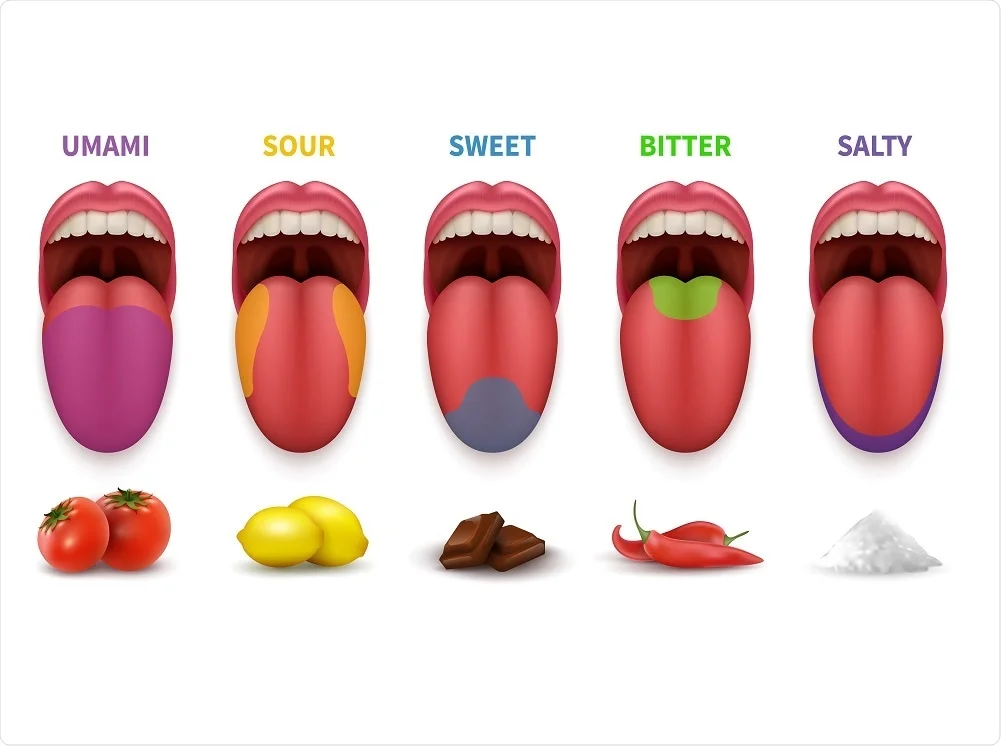
Ever wonder why the dish you create, even after following instructions given by the creator, tastes different from the dish they created personally? The answer to that question lies in the chemistry and how our body senses the taste. Flavour is a multisensory, complex experience resulting from the combination of taste, smell, texture and other sensory cues. Biochemistry plays a huge role in improving these cues. Our taste buds on the tongue contain taste receptor cells that detect the chemical compounds (tastants). Other components like retronasal olfaction, i.e. smell and mouthfeel (somatosensation), are all mediated by biochemical processes and interactions. The food industry uses biochemistry to improve aspects such as chemical composition, matrix effects, taste-aroma interactions, and temperature effects. We look into these aspects in detail in the following article covering topics like the basic chemistry, the role of aroma, mouthfeel, how the interactions are used to enhance a product’s flavour and its challenges.
The Biochemistry of Taste
When talking about the flavour of a food, the first instinct is to determine how it tastes. So, let’s cover that area first. Taste is perceived by complex reactions taking place upon contact of food with the tongue. As mentioned before, the tongue contains taste buds with taste receptor cells. These cells are responsible for detecting various stimuli and converting them to electrical signals, which are transmitted to the brain. Here is a brief overview;

| Type of taste receptors | Detected taste | Function and example |
| Sweet Receptors | Sugars & artificial sweeteners | Detects energy-rich foods (e.g., glucose, fructose, aspartame) |
| Sour Receptors | Acids (H⁺ ions) | Helps identify acidic and potentially spoiled foods (e.g., citrus fruits, vinegar) |
| Salty Receptors | Sodium & other salts | Essential for electrolyte balance (e.g., table salt, seaweed) |
| Bitter Receptors | Alkaloids & toxins | Warns against potential toxins (e.g., caffeine, dark chocolate) |
| Umami Receptors | Amino acids (glutamate) | Detects protein-rich foods (e.g., meat, cheese, soy sauce) |
The Role of Aroma in Flavour Perception
When discussing the flavour of food, most people instinctively think of taste as the one that matters more than others. However, aroma plays an even more significant role in how we perceive flavours. Our sense of smell can detect thousands of volatile compounds, contributing to the complex experience of eating.

How Aroma Works in Flavour Perception
Aroma perception occurs via olfactory receptors in the nose, which detect volatile molecules released from food. This process can happen in two ways:
- Orthonasal Olfaction: Smelling through the nose before eating.
- Retronasal Olfaction: Aroma molecules travel to the olfactory receptors through the back of the throat while chewing and swallowing.
This is why food tastes bland when we have a blocked nose—without aroma, we lose a major component of flavour perception.
Chemical Compounds in Aroma
Several chemical groups contribute to food aromas:
- Esters – Found mainly in fruits like apples and bananas.
- Aldehydes – Responsible for green, fresh flavours (e.g., grass, herbs).
- Ketones – Present in dairy products like butter and cheese.
- Terpenes – Found in citrus fruits, contributing to their bright, zesty aroma.
By understanding these compounds, food scientists can enhance flavours or replicate natural aromas synthetically.
Mouthfeel & Texture: The Forgotten Factor
Flavour is not only about taste and smell; there is another factor called mouthfeel and texture, which significantly influences how we experience food. The way food feels in our mouth can enhance or diminish its overall appeal.

Key Textural Components
- Crispness & Crunchiness – Found in chips, crackers, and fresh vegetables, caused by moisture content and structural integrity.
- Creaminess & Smoothness – Present in dairy products and sauces, often influenced by fat content and emulsification.
- Chewiness & Elasticity – Common in meats and bread, affected by protein content and gluten development.
- Astringency & Dryness – Found in tannin-rich foods like tea and wine, caused by interactions between proteins and polyphenols.
The Science Behind Mouthfeel
Mouthfeel is largely influenced by rheology—the study of how substances flow and deform under stress. Factors like viscosity, elasticity, and lubrication determine how we perceive different textures in food.
Enhancing Flavour: The Role of Chemistry in Food Science
Food scientists manipulate biochemical and chemical interactions to enhance flavour. Some common techniques include:
1. The Maillard Reaction
- The reaction between amino acids and reducing sugars at high temperatures creates complex flavours and browning.
- Responsible for the taste of roasted coffee, grilled meat, and baked bread.
2. Caramelisation
- The thermal breakdown of sugars produces the rich, sweet flavours found in caramel, roasted nuts, and toasted marshmallows.
3. Enzymatic Reactions
- Enzymes like amylase break starches down into sugars, enhancing sweetness in malted barley for brewing.
- Lipoxygenase enzymes contribute to fresh vegetable flavours but can also cause off-flavours in spoiled food.
4. Flavour or Encapsulation
- Used in the food industry to protect volatile flavour compounds from degradation and release them at the right moment (e.g., gum, powdered seasonings).
Challenges & Ethical Concerns Flavour Engineering
While food chemistry has significantly improved taste and aroma, there are several challenges and ethical issues to consider.
1. Artificial vs. NaFlavourslavors
- Consumers often prefer “natural” flavours, but some natural sources are unsustainable.
- Synthetic flavouring can mimic natural ones while being more ethical and scalable.
2. Health Concerns
- Some flavour-enhancing chemicals, like monosodium glutamate (MSG) or artificial sweeteners, have been debated for potential health effects.
- Regulatory bodies like the FDA and EFSA ensure that food additives remain within safe consumption limits.
3. Cultural & Sensory Differences
- What is considered “delicious” varies across cultures. Fermented foods, pungent cheeses, or spicy dishes may be appealing to some but unpalatable to others.
4. Sustainability in Flavour Production
- The mass production of flavour compounds can strain natural resources.
- Biotechnological advances, like microbial fermentation, offer eco-friendly solutions for producing flavour compounds.
Conclusion
The biochemistry of taste is a fascinating interplay between taste, aroma, mouthfeel, and food chemistry. Advances in food science continue to refine our understanding of these factors, allowing for better flavour engineering while addressing sustainability and ethical concerns. As research progresses, the future of food promises not only enhanced taste but also healthier and more ethical production methods.


